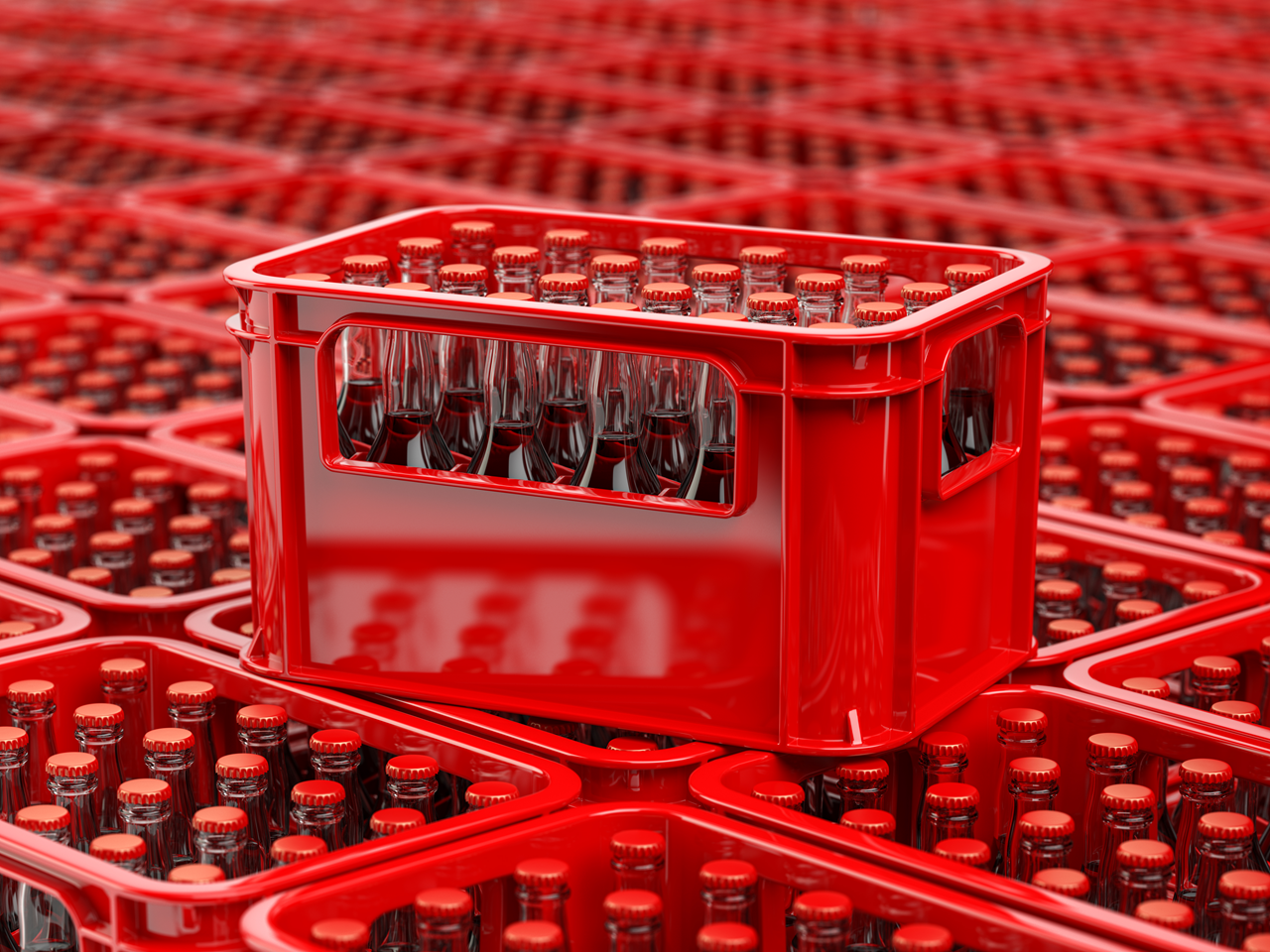Case study: warehouse optimization for a leader in the beverage industry

In 2017, when Coca-Cola HBC Česko a Slovensko, s.r.o. decided to improve its logistics processes and consolidate distribution into one modern warehouse, it enlisted the help of DYNAMIC FUTURE. The aim of the extensive project was to optimize material flows and design a suitable type of warehouse system for the new hall. Read on to find out what the DYNAMIC FUTURE experts examined and what solutions they came up with.
Complex assignment and analysis of variants
The assignment was quite complex. Jan Šlajer, Managing Director of DYNAMIC FUTURE, mentions that the project involved several phases. “We looked at different options – manual, semi-automatic and automatic systems. Each had its advantages and disadvantages, which we analysed through simulations. The goal was to find the optimal solution that would meet both the current and future needs of Coca-Cola,” explains Šlajer.
The simulation included an analysis of production capacities, material flows and the possibility of integrating new technologies such as conveyor bridges and automated trolleys. The result was a series of recommendations to ensure efficient operations in the years to come. “It was also important not only to simulate the current situation, but to anticipate developments for at least five years ahead. Based on the analyses, we were able to determine exactly what warehouse capacity would be needed,” adds the managing director.
Design of technologies and storage solutions
The project was divided into two phases. The first phase focused on the design of the distribution warehouse, while the second focused on optimizing logistics processes and adding production lines. At the time, Coca-Cola had warehouses split between Kyje and Horní Počernice, which presented a logistical challenge that had to be solved by merging.
One of the key decisions was whether to opt for a fully automated warehouse. Jan Šlajer describes, “We looked at different types of technology, such as VNA trolleys and automated shelving systems. At that time, the cost of these technologies was still very high – automated trolleys were up to seven times more expensive than manual ones. Today these costs are lower and the technology has moved on, but at that time we had to carefully consider what solution would be best for Coca-Cola.”
In addition, they prepared a DYNAMIC FUTURE ABC analysis, which distributed the goods in the warehouse according to the turnover rate and thus optimized the storage areas. The use of conveyor systems for smoother movement of goods between warehouses and dispatch was proposed. “As part of the project, we also had to deal with different types of products and technology – this included PET moulds from which plastic bottles are blown or different types of packaging and materials that came from other plants,” explains Jan Šlajer.
Precise control thanks to data
One of the main benefits of the project was working with the very accurate data that Coca-Cola had at its disposal thanks to SAP. “We were able to track every pallet from production to dispatch. This allowed us to run accurate simulations and recommend the optimal solution,” says Šlajer, adding that they were able to determine exactly how many warehouse positions and what technology would be needed for the operation.
Simulations have shown that Coca-Cola will need to increase warehouse capacity from 35,381 pallet locations in 2018 to 44,722 pallet locations in 2022 to cope with the projected growth in production and imports. Although the project developers also foresaw possible complications (potential installation of a new production line), the project was designed to be flexible and ready for future changes. “It is important that the project also reflects possible changes, such as the addition of a new production line, which Coca-Cola considered at the last minute,” says DYNAMIC FUTURE’s managing director.
Planning for the future
For the Coca-Cola HBC project, it was essential to design the logistics solutions not only with current needs in mind, but also for future development. In the case of Coca-Cola, we have prepared simulations for up to five years ahead,” explains Jan Šlajer.
Projects like this are not just about automation. “Sometimes we have to use a combination of automated and manual solutions because not all technologies make sense in a given context. We also have to take cost and operational efficiency into account,” adds Šlajer. This approach ensures that the company gets a solution that not only meets current needs, but is able to adapt to changes in the market and in production.
The logistics process optimization project for Coca-Cola HBC is an example of how complex the design of a warehouse solution for a large corporation can be, and how important data and careful planning are to the successful management of such a project.
Note: Photo is illustrative.
Related articles
Apr 29, 2025
Digital twins are changing healthcare, market heading for $9 billion
Digital twins are changing healthcare, market heading for $9 billion
Apr 29, 2025
Artificial intelligence helps, but humans must make the decisions, say DYNAMIC FUTURE executives
Artificial intelligence helps, but humans must make the decisions, say DYNAMIC FUTURE executives
Mar 25, 2025